2024 North Sonar Foil System Overview with Ryan and Matt
Ryan Hooker from MACkite and Matt Aiken from North chat about the North Sonar Foil System for wing foiling, surf foiling, and kite foiling. Find out who it's for and what's new for 2024.
Ryan: I've been riding this system for the past six months or so, and a few things that I've been liking about it are that it's a really solid setup. It's one of the stiffer foils that I've been on. The mast goes all the way down to the connection of the fuselage. You also have the option of the full carbon fiber fuselage, which helps lighten up the whole system. North has a really good range of wings for anyone from the beginner riding some of the bigger wings to a more seasoned rider who's going to enjoy a smaller Surf Series front wing, or even their high aspect wings. They've got wings coming out that go all the way down to 550 cm sq and up to... 2150?
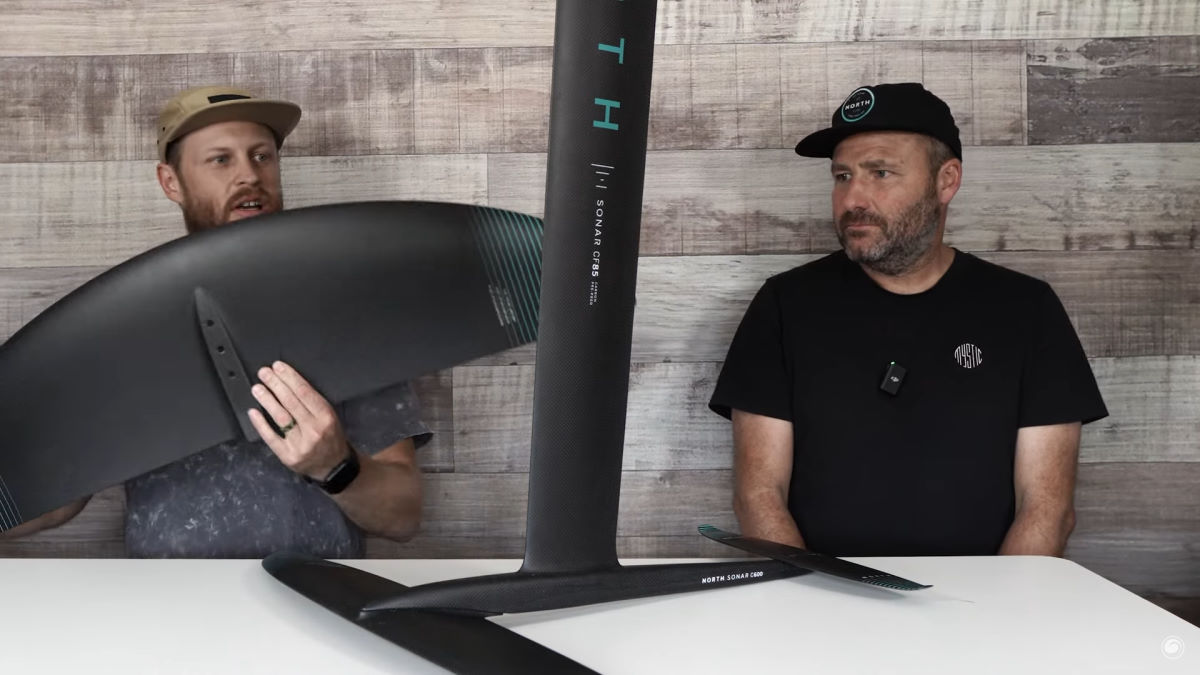
Matt: The HA front wings go from 550 all the way up to 1450, every 100 centimeters except for 1350. The MA wings now have an 850 going all the way up to the big boy, the 2150. A couple of months ago we launched our new SF--Surf Front--wings, and those start at 930 and go all the way up to 1230. That's eight or nine different HA wings, a whole selection of MA wings, and new surf wings, so we've got a new front wing for any rider on the market at this point.
Ryan: It's super easy to upgrade your foil as you progress in this lineup. That's one of the things I love about it. You can be a first-time beginner starting with the big 2150, and you won't need to invest in another brand to upgrade because there's a foil for every point in your progression, to as far advanced as you care to get. That's a huge thing for anyone getting into wing, surf, or kite foiling.
Matt: I think it's fair to say that it's getting really hard to label wings as "surf", "kite" or "wing foil" wings. The SF wing was designed for prone foiling, and they're getting great reviews as prone wings, but we've all been having a ton of fun winging on them too, so as the surf/wave riders that we all are at heart, we're all really having a good time riding these SF wings.
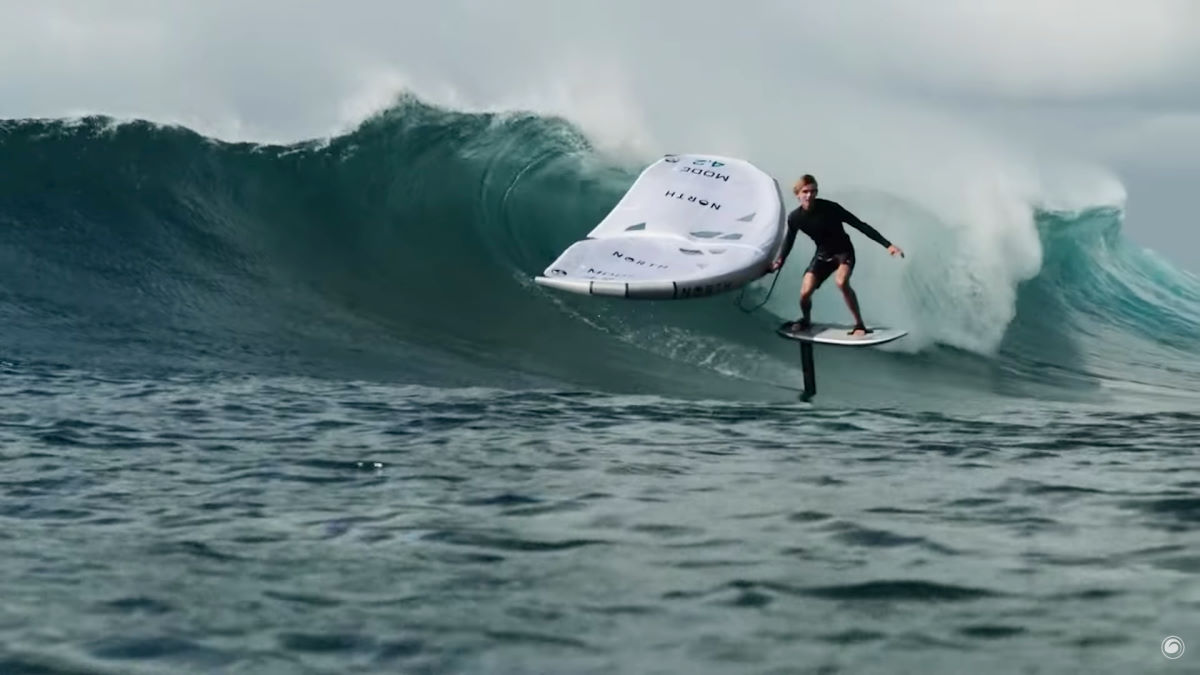
Ryan: I'm a huge fan of them. I've been riding the 930 for a little while now, and it carves really well and has good speed to it. Another thing that's nice about the Sonar system is that you have other stabilizer wing options, so as you progress you can tweak your system. Say you've decided on an SF front wing and you want to make it just a little bit carvier. You have the option to pick up a different stabilizer wing for it to make it just right for your style of riding.
Matt: We're entering our fourth season with North Foils, and everything is forwards and backwards compatible. If you bought our very first setup with our very first generation of front wings, everything you bought at that point is still compatible with anything that's coming out right now. We launched with one stabilizer in the early days of foiling, and now we have multiple sizes of high aspect stabilizers, we have multiple sizes of a more traditional mid-aspect stabilizer, and now we've got the new surf stabilizer, which is interesting with the surf front wings, and that's going to be available in multiple sizes as well.
All of this you can buy one piece at a time, and everything is compatible, but we do have an out-of-the-box starting point with our Sonar system, and it comes in a nice travel bag. You get a mast with a fuselage and our standard 270 cm stabilizer. It comes in two different mast lengths, so the only choice you have to make is which length you want and whether you want it in alloy or carbon. By industry standards, these are a pretty incredible value: our full carbon setup is $1149 and the alloy is $799, and you can add a front wing starting around $500, so for well under two thousand dollars you can get a full carbon setup from North.
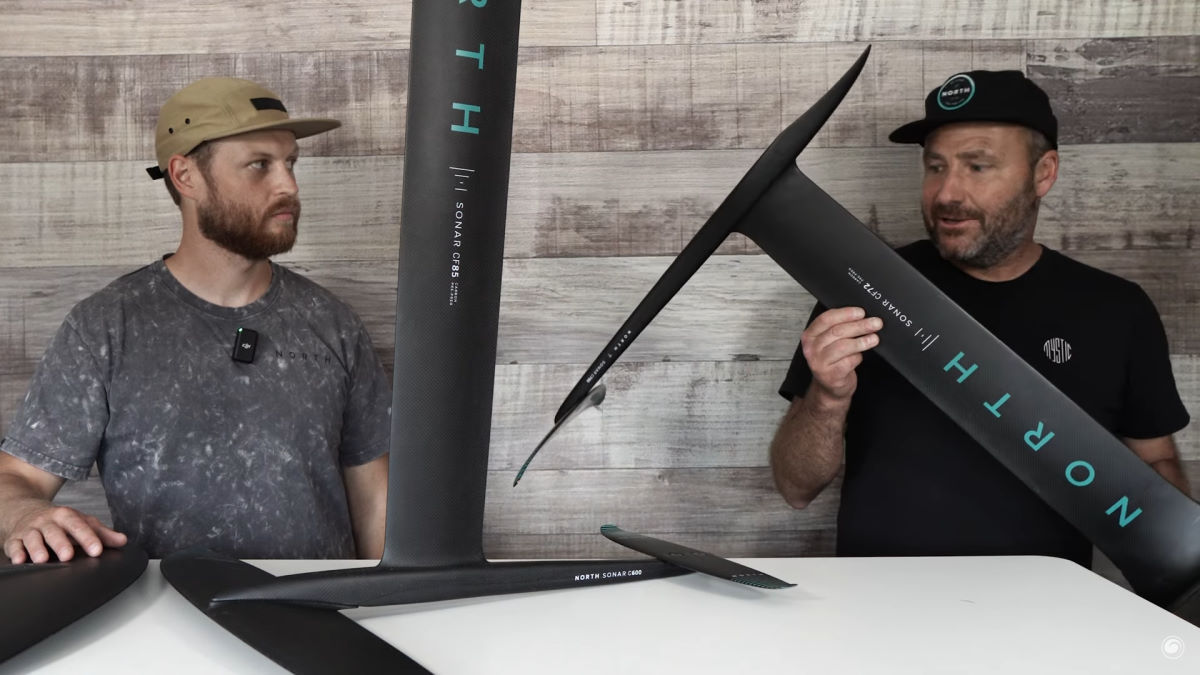
Matt: You can buy into the system when you're just learning your sport, whether it's your first kite setup or your first wing foil setup, and then as you potentially end up in different sports or are wanting to try different wings, everything's compatible and you build off this one base system. You could start with a 72 mast, which a lot of people like to learn on, and end up migrating towards a longer mast over time or a shorter mast for shallow water or a trip. Everything is compatible, whether you bought first generation or our latest products.
Ryan: It's awesome how modular the system is. I've been riding the 85 mast and running the longer 700 fuselage with the 930 front wing and the 201 stabilizer wing, so you can tweak it exactly for what you want it to do, which is really awesome. I've put in quite a few sessions where I'm tweaking one variable to see which plays better in different conditions. We get a lot of conditions here in the Great Lakes where you get that really little swell and you almost want a downwind glider. I've been using one of the high aspect wings that's right around 1000 cm sq. That's been awesome for that with the longer fuselage. If you want to make it a little more reactive and a little quicker, it's easy to throw on that smaller fuselage. The fuselages come at a really good price point for a full carbon fiber fuselage, and that's something that a lot of brands don't even have right now; even if they're doing carbon fiber masts, they're still running an alloy fuselage.
Matt: I would argue that's one of the most unique things about our system; that we have a full carbon fuselage. There are lots of foil brands that have this beautiful carbon mast and tremendous front wings, and then they put a heavy piece of aluminum at the end of the mast. If you had a choice between taking a carbon mast and an aluminum fuselage or a carbon fuselage and an aluminum mast, you notice a bigger difference by going to carbon in the fuselage because this is at the end of the mast. It's extended out, so it's just like working out at the gym and holding a weight in close versus at the end of your arm's length. So it's a really big deal that we offer a carbon fuselage.
We also have one of the stiffest connections between the mast and the fuselage. It's called the GeoLock system, where the end of the mast has some angles cut into it so that it gets pulled into the fuselage when you're tightening it. Because of the geometry on it, even over time where there's a little wear, the system will stay tight because you can just keep snugging it up, so it's as stiff on day one as it is after a couple of seasons.
We even have one of the stiffer carbon masts on the market. Some of the brands have been coming out with premium high modulus masts, and we're surprisingly close to some of these, and in some cases, even stiffer. Our specifications on our stock carbon setup are really quite impressive.
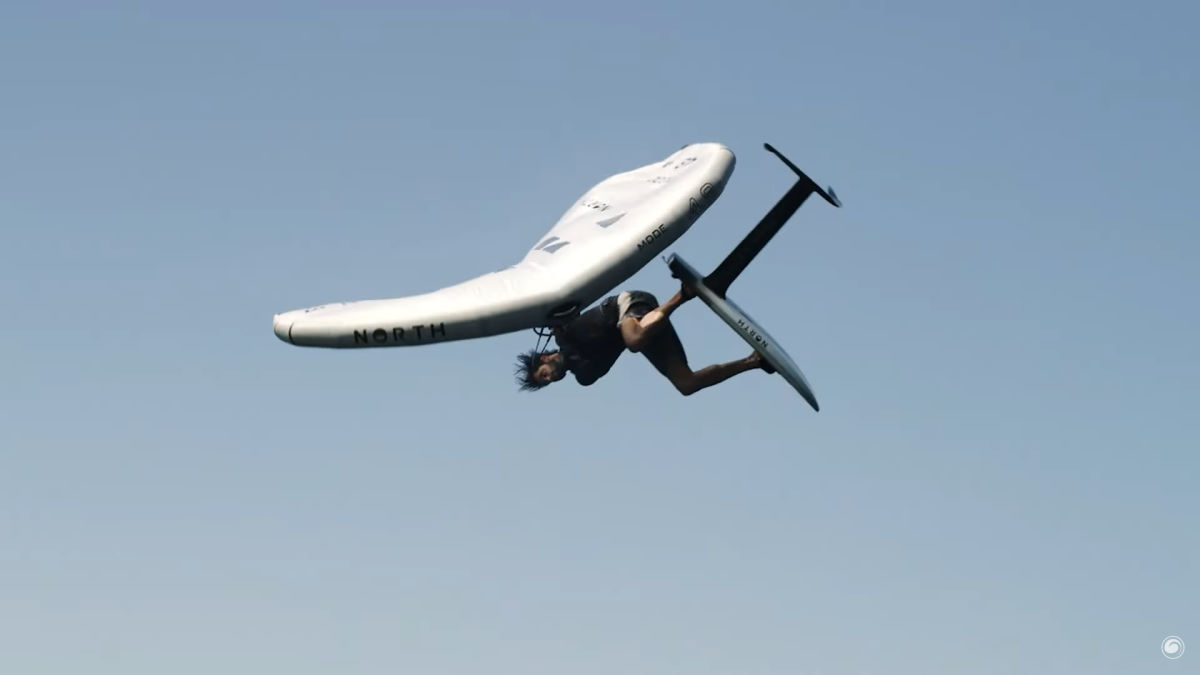
Ryan: It is definitely one of the stiffest setups I've been on. Overall, the North Sonar is an excellent system for anyone. If you're getting into any kind of foiling and are looking at carbon, you'll definitely want to check this out because there's a wing for everyone to start with and there's a wing for everyone to progress to, and it's not going to hold you back. What does the lineup look like for spring 2024?
Matt: What's in the pipeline? We have two development teams at North working on front wings, so we've got a ton of horsepower into design and development, and by spring 2024 we'll have mid-aspect wings in the MA series starting at 650 and going all the way up to a giant 2450 that's going to come out in the winter. Our smallest SF wing right now is a 930, but we've got two more sizes coming underneath that. We'll go from around 630 up to 1230, so we'll have a full collection of surf wings, a full collection of the MA mid-aspect wings, and an HA wing for anyone and everyone. So we're coming with a ton of new front wings right now.
Ryan: They're some of my favorite wings that I've been riding. Amongst all the different brands that we get to try here at the shop, North has been one that I've landed on as a top favorite for all the conditions we get here in the Great Lakes. There's quite a variety of conditions that you get here, from little tiny bumps to good head-high days, and it's nice to have something that suits it all.
Matt: So many of our friends and people we work with have only been winging for a couple of years and are still in that learning curve where everything's still fun and exciting. It's cool when you have what you think is your dialed setup, and then you try a surf front wing for winging. All of a sudden, it's like a whole new ball game. We market them for prone surf, but they're super fun for winging too. They've got such a low stall speed that you can't fluff a turn or a jibe. They're super easy to ride around toeside. Even if you do fluff a turn, you're still on foil so you just effortlessly pump out of it. For everybody that tries them, all they want to do is ride surf wings.
Ryan: That's one of my favorites. I rode the high aspect quite a bit in a similar size and now the 930 surf wing, and it's a really good blend of a carvy foil that doesn't stall out. I take it down to really slow speeds and pump it out of stuff. It's just a lot of fun.
Matt: The other interesting thing with these surf wings is how easy it is to pop the board off the water and onto foil in light winds. That certainly wasn't in the design criteria at all, so it's an interesting nuance how well they work in light winds. While I wouldn't say these are necessarily good kiting wings since you do sacrifice some top speed, and with the amount of power you can get from a kite, of course you don't need as much get-up-and-go as with winging, but they're really interesting to kite foil on too. You can go ridiculously slowly through turns. If the kite's in the air and you're on foil, you will not come off foil. I don't think it's a good kite foil solution, but it's really interesting how well they work for super light wind in kite foiling.
Ryan: With a lot of other systems, you really have to work at it to get that board speed going, whereas the first time out on this one, taking off in some challenging wind conditions, I didn't have that issue at all. By the time you get going a little bit with the board, you're up and riding on foil.
Matt: If your board's got anything resembling forward momentum, you can pump the foil a couple of times and you're up and going.
Ryan: It's exciting stuff on the horizon and exciting stuff that's out now.
Matt: With all these options, there's quite a bit of personalization possible. We both might want to ride this 930 surf front wing. I'm personally liking our standard stabilizer with it, but you may prefer the surf stabilizer. I think it's really important for the customer to be able to speak to someone at a shop who actually understands all the nuances and differences between the different styles and sizes of stabilizers, or what they're going to get by changing the length of the fuselage. With all these combinations, we really appreciate that MAC keeps all sizes and combinations of our products in stock.
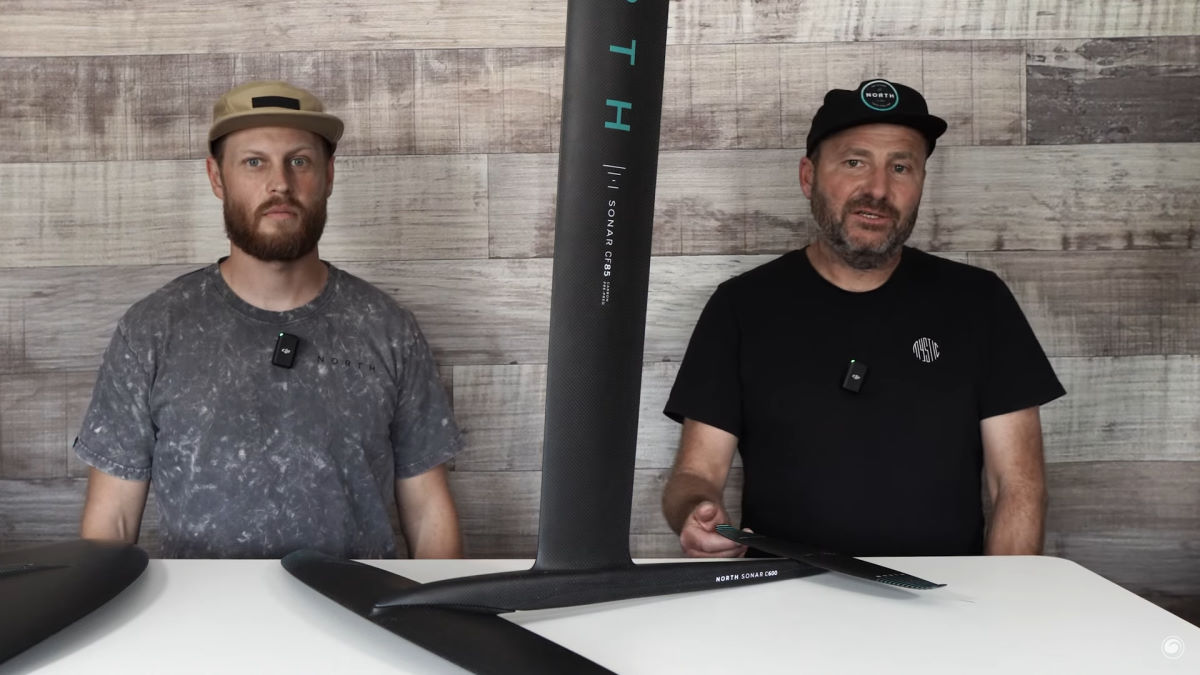
Ryan: It's a great system and it's something that you can tailor exactly to what you want to get out of it, so it's important for us to keep stock so that when a rider calls in and wants a specific rear or front wing, we can get it out the door to them. It's also important for us to get out there on the water and test it out to understand what kind of conditions might be better for a certain combo or why you might want to go with a longer fuselage or shorter fuselage and have that first-hand experience that we can pass on to our riders.
If you have any questions about anything you've seen here, feel free to reach out to us. Give us a ring at the shop. We're here to help you out. See you out on the water!
MACkite Subscription Links:
YouTube | Instagram | Spotify Oddcasts
Contact MACkite Below:
800.622.4655 | Kiteboarder@MACkite.com | LIVE Chat Messenger

Recent Posts
-
Kiteboarding | Crafting the Harlem Force Kite with Sustainability and Performance
Unparalleled Performance Meets Unmatched Sustainability The kiteboarding industry is on …24th Apr 2024 -
Duotone Ventis 2025 | What's New?
If you're familiar with Duotone's Ventis, you know its specialty is freeriding in light wind …23rd Apr 2024 -
Duotone Ventis D/LAB 2025 Overview
If you ride in an area with multiple light wind days and need a wing that'll let you get o …23rd Apr 2024




